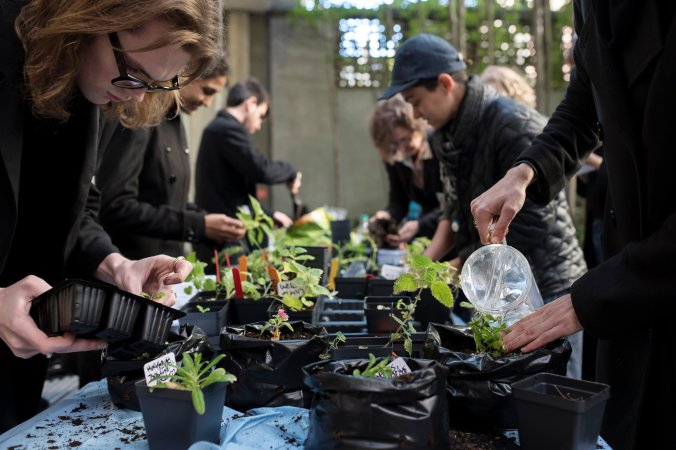Search on the three words “seeds of change” on this platform and you will find dozens of stories dealing with topics like botanical hazard initiatives or innovative approaches to flora conservation and/or climate change and some of the radical plans made to prepare for it that we have linked to over the years. Type the same three words into your favorite search engine and the topics are much more diverse. The three words are also the name of an evolving exhibition, and the subject of an article that mixes art, academia and activism:
A Seed Artist Germinates History
An exhibition using plants brought to New York in ships’ ballast illuminates the city’s hidden past using stinging nettle, milk thistle and amaranth.
About 140 years ago, a botanist named Addison Brown noticed an unfamiliar red-tendriled plant growing around Red Hook, Brooklyn. Trade had lately picked up, he told readers of the Bulletin of the Torrey Botanical Club in 1879, and as ships arrived, they dumped thousands of tons of ballast — earth and stones used to stabilize ships — that carried seeds from far-off lands: The red plant, among several new species growing along Gowanus Creek, was Amaranthus crispus, native to South America.
“Amaranth,” said Marisa Prefer, a gardener leading a group through the same neighborhood last week, picking up a stalk of the crumbly plant, which was spilling out from a crack in the sidewalk like a Medusa head. “These wild urban plants can survive in the craziest circumstances.”
This year, a few dozen New Yorkers have been learning about and growing plant species that were inadvertently brought to the city in ship ballast as part of “Seeds of Change,” an ongoing exploration of the phenomenon by the artist Maria Thereza Alves. Ms. Alves, whose exhibition on local ballast plants opens on Friday at the galleries of the Sheila C. Johnson Design Center at The New School, is the most recent winner of the Vera List Center Prize for Art and Politics. She has spent nearly two decades uncovering long-buried colonial histories using ballast seeds, which can lie dormant in the soil for hundreds of years, only to sprout in the right conditions…
Read the whole article here.
